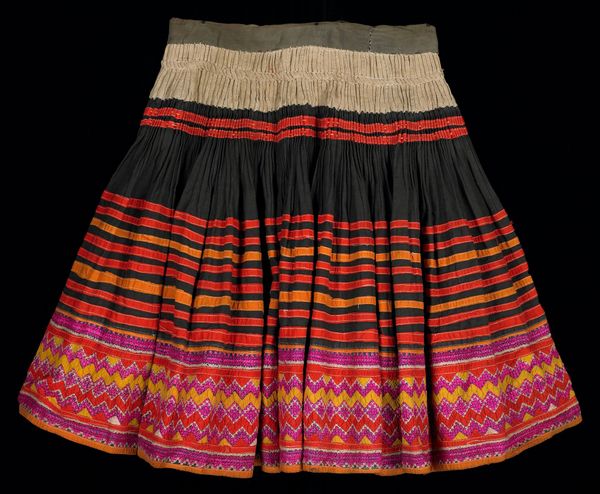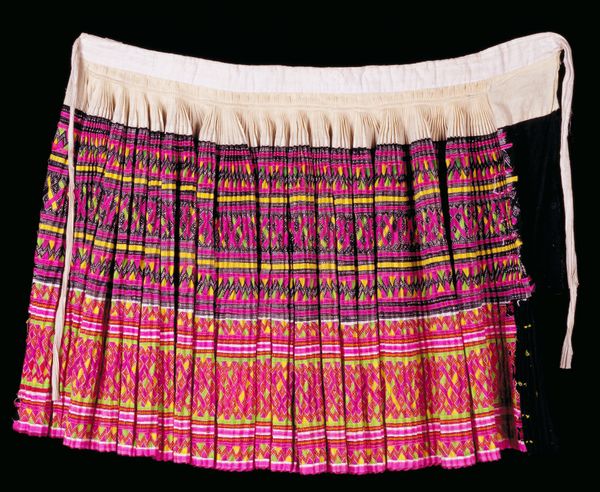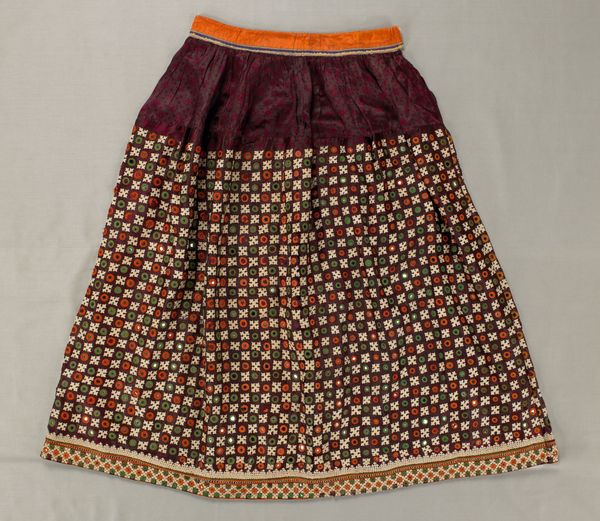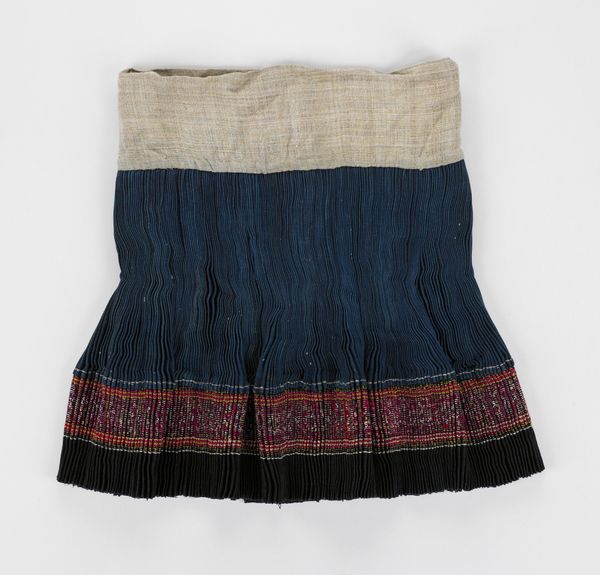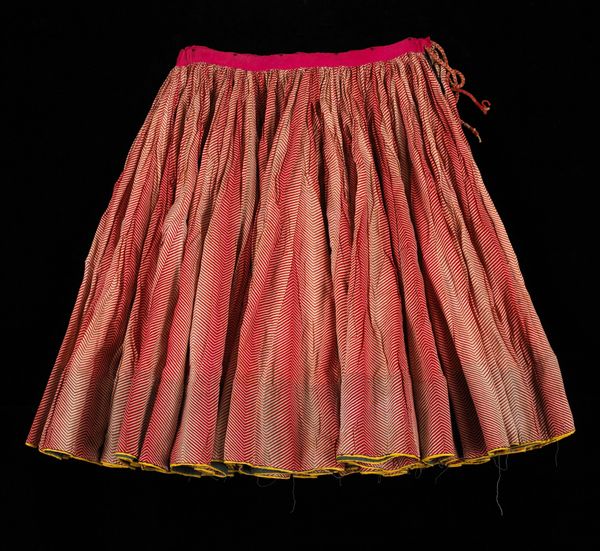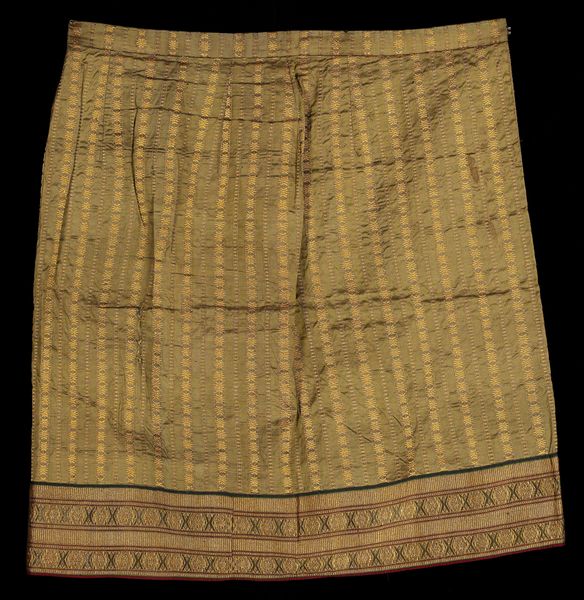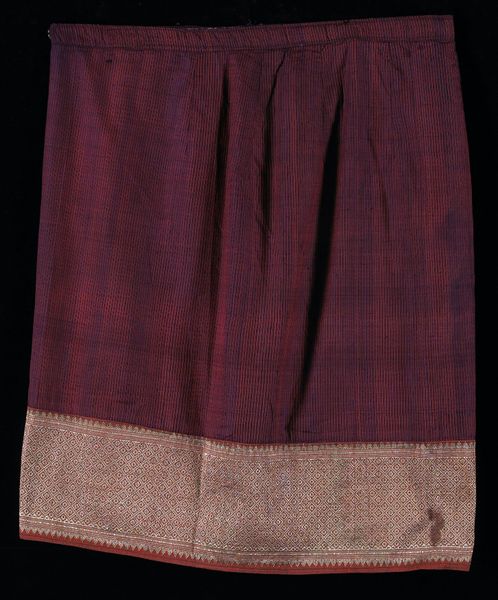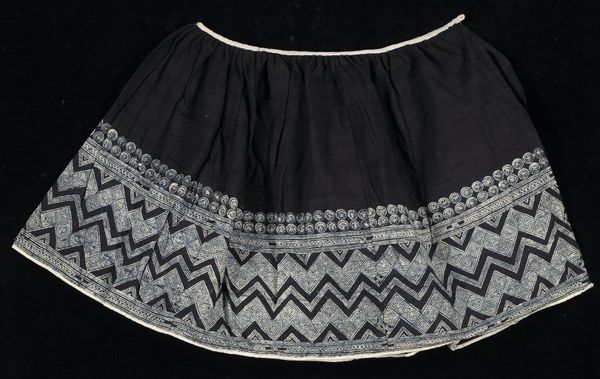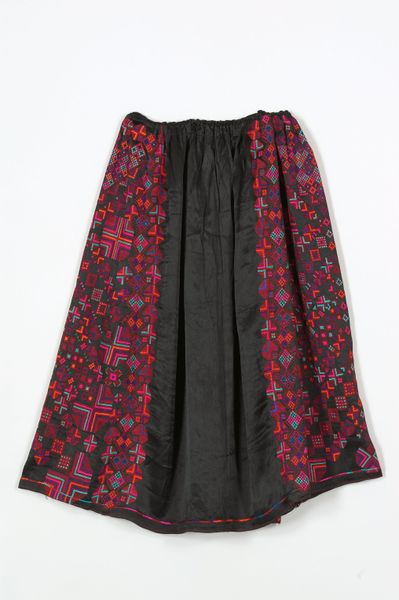
fibre-art, textile
#
natural stone pattern
#
fibre-art
#
asian-art
#
textile
#
fashion and textile design
#
hand-embroidered
#
pattern design
#
geometric
#
fabric design
#
pattern repetition
#
textile design
#
beaded
#
decorative-art
#
imprinted textile
#
layered pattern
Dimensions: 29 3/4 x 11 in. (75.57 x 27.94 cm)
Copyright: Public Domain
This skirt was made by a Hmong artist, we don't know when or exactly where, but it’s made of cloth. Look at the way the pattern seems to emerge from the material itself! I like to think of this as a kind of slow painting, each thread a stroke, each color shift a breath. The texture of the skirt is so important – the way it gathers and folds, creating these almost accidental patterns on top of the printed ones. There’s a section down near the bottom with red and pink stripes; these feel like the last, deliberate marks in a longer, more intuitive process. It reminds me of Sheila Hicks, or maybe even Agnes Martin, but with something extra, a story woven in. Art isn't just about what it looks like; it's about where it comes from, what it does, and what it means to the person who made it.
Comments
minneapolisinstituteofart almost 2 years ago
⋮
The Hmong people are originally from China, but during the last two hundred years many of them have migrated to other countries in Southeast Asia as well as Europe and North America. For many Hmong women, traditional clothing continues to be a source of creative expression as well as cultural affirmation. This clothing is particularly appreciated by all the community when worn for holiday celebrations. Although there are a variety of costume styles reflecting regional and ethnic sub-group preferences, embroidery is universally valued and used to embellish everything from the distinctive pleated skirts to baby carriers, jackets and funeral garments. Sometimes needlework is worked directly on specific garments, but frequently individual unites of cloth, as seen here, are embroidered and then incorporated into individual costumes. As clothing wears out, it is not unusual for the embroidered panels to be reused. Hmong women are known to use many embroidery stitches, but the fold and tuck appliqué style seen here is a distinctive tradition that is admired wherever it is seen.
Join the conversation
Join millions of artists and users on Artera today and experience the ultimate creative platform.
